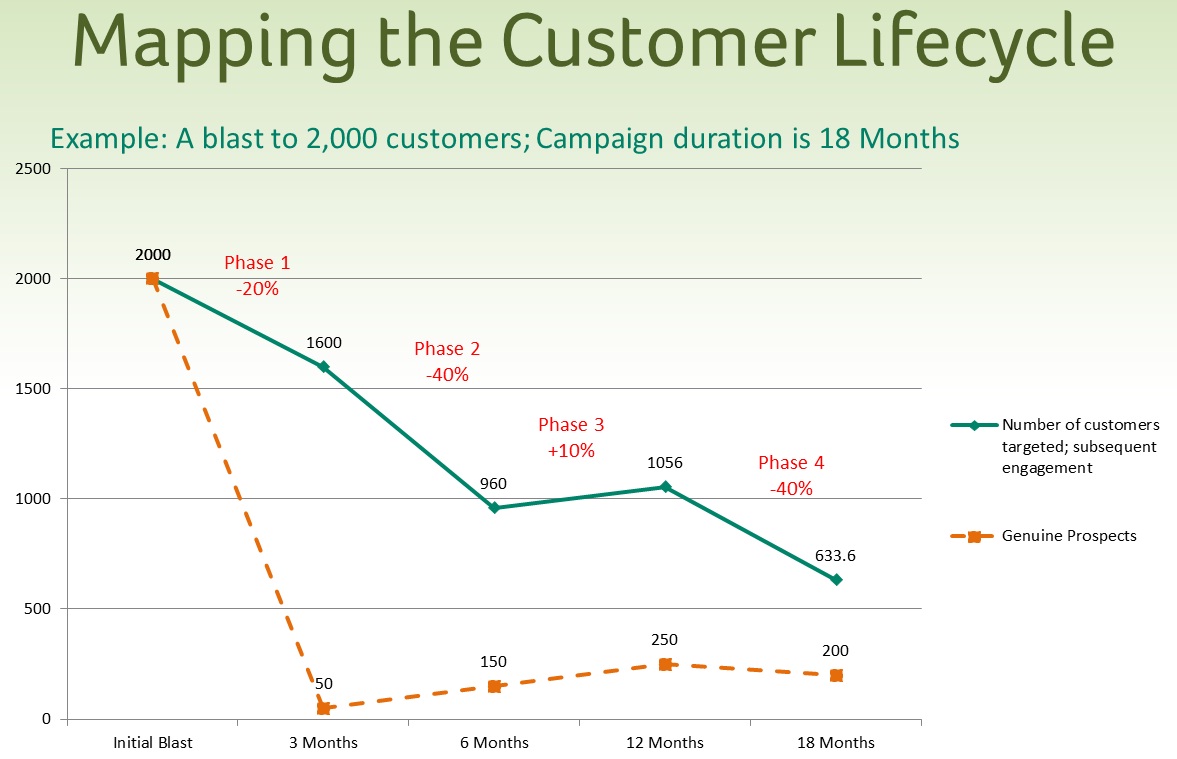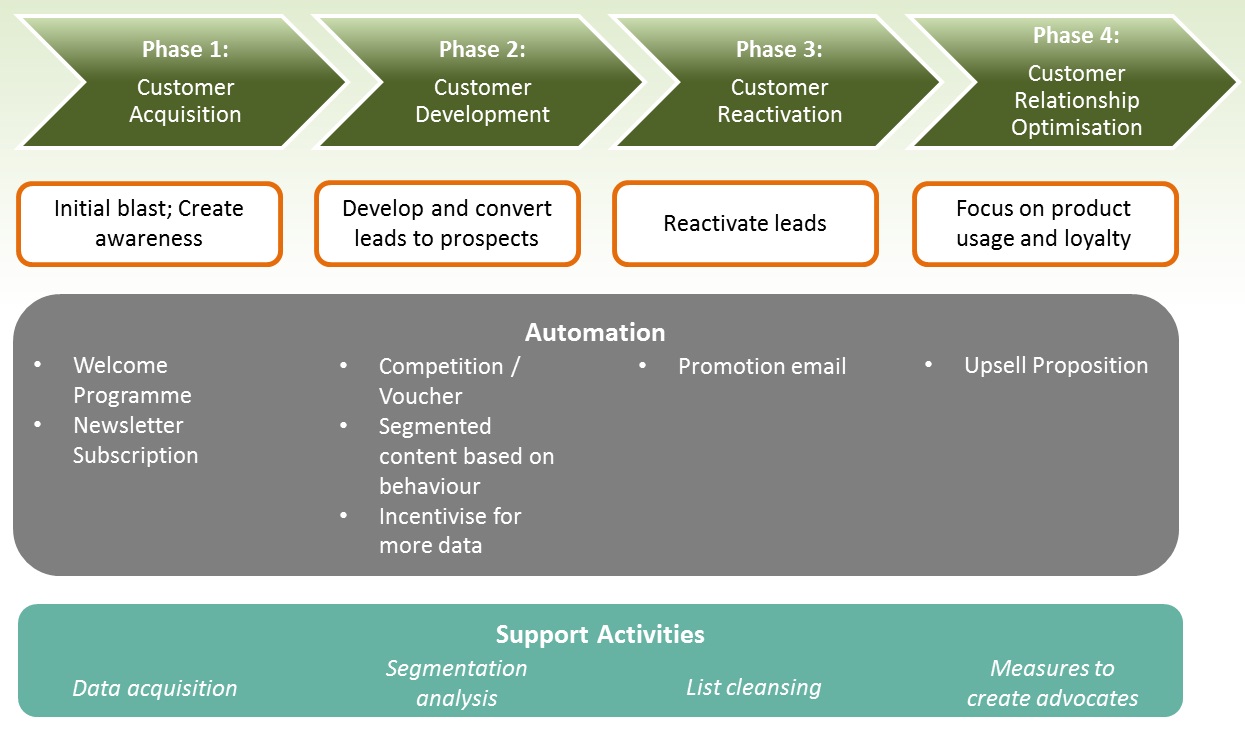"Q: What is the most important objective for email marketing in the coming year and why?
A: Timing emails with content that is relevant to where the prospect/lead is in the sales cycle."*
Every business has a different customer and sales lifecycle, therefore one of the first things to do before you consider automation is mapping this out. You need to know how you sell, and more importantly, how customers buy. This way you can plan your timings around a typical customer engagement or a sales process.
In fig 1 below you will see a hypothetical campaign to 2,000 customers mapping an engagement lifecycle over an 18 month period. For illustration purposes, I have highlighted 4 typical touch-points or "phases" that present opportunities for manual or automated intervention (more on this below).
What's important to note here is the two lines - the green represents the natural cycle of user response when an email is sent to an unqualified list, i.e. down! Our objective in this case is to identify the orange line - those that are genuine prospects. An effective email marketing campaign will narrow the gap between the green and orange lines through techniques mentioned in previous blogs, including list growth and management, as well of course, as segmentation.
Fig 1:

To highlight the potential role of automation in a lifecycle (sales or customer engagement), fig 2 below explains each of the 4 phases from fig 1 in more detail. You can see that there is an opportunity to automate during each phase - from the initial newsletter/welcome programme introduction, through to promotions during the reactivation phase, through to upsell or cross-sell propositions when the customer relationship becomes more clearly defined.
The key point here is that these phases must first be identified before the automated content can be generated.
Fig 2:

A final point, in fig 2 above I have highlighted the necessary support activities that accompany an automated process. It is important to keep in mind that there will always be a need for manual, human oversight regardless of whether you run an automated campaign or not.
In the second part of this section on lifecycles we will highlight the complexity of combining automation with basic segmentation techniques.
* Unidentified customer response as per the "2011 Email Marketing Survey", Marketing Sherpa, 2010

